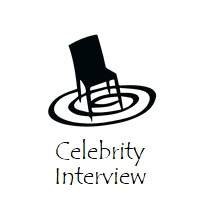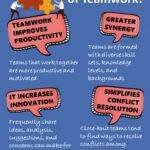
Celebrity Interview is a great way to allow experts and leaders to share their experiences in a more engaging way
Celebrity Interview exists to help experts and leaders share their experiences and insights with a group in a profoundly more engaging and interactive way than regular presentations.
You can enable a large group of people to connect with a leader or an expert (the celebrity) as a person and grasp the nuances of how that person is approaching a challenge. With a well-designed interview, you can turn what would otherwise be a passive, often boring presentation into a personal narrative that is entertaining, imparts valuable knowledge, and reveals the full range of rational, emotional, and ethical/moral dynamics at play.
You can often turn the interview into an invitation to action, drawing out all the elements needed to spark the participant group’s imagination and encourage cohesive action.
Four Structural Elements
1. Structuring Invitation
- Invite the celebrity to let go of his or her formal presentation or speech and answer the harder questions on everyone’s mind in a casual “talk show” format
- Invite group members to listen, see the person behind the celebrity, and write down questions with colleagues
2. How Space Is Arranged and Materials Needed
- Interviewer and celebrity in the front of the room where everyone can see and hear the interaction (lapel microphones, bar stools, or living-room furniture recommended)
- Unlimited number of people in a space where they can sit to view the interview and later form small groups (theater-style seating is OK)
- 3-by-5-inch cards to collect questions generated via 1-2-4
3. How Participation Is Distributed
- Part one, interview: everyone has an equal opportunity to listen
- Part two, questions: everyone has an equal opportunity to engage with one another to formulate questions
- Whole group for interview
- Individuals, pairs, small groups for 1-2-4 to generate questions
4. Sequence of Steps and Time Allocation
- Interviewer welcomes and introduces the celebrity and topic to be discussed. 3 min.
- Interviewer asks questions that the audience would be expected to ask (both humor and gravity are appropriate). 15–30 min.
- Invite participants to generate additional questions in a 1-2-4 conversation and then on 3-by-5-inch cards. 5–10 min.
- Interviewer sifts the cards, looking for patterns and asking additional questions to the celebrity. 5–10 min.
- Interviewer makes closing comments, thanks the celebrity. 1 min.
Purposes and Objectives
- Create or boost a connection between an expert or leader and an audience
- Give substance and depth to a topic
- Avoid boring lectures and PowerPoint presentations
- Engage every individual in generating questions for further exploration
- Shed light on the person behind the position or expertise
- Bring big concepts to life with stories that come out in the interview
Tips
- A good sequence of starting questions is: What first inspired you in this work? What challenges you in this work? What keeps you going in this work? What do you hope can happen for us in this work?
- Give the questions to the celebrity in advance
- If possible, send background materials to participants in advance
- Do not allow the introduction to become a minilecture
- Interview questions should not be trivial or easy to answer
- Interviewer must ask repeatedly for stories and concrete details that illustrate concepts
- Interviewer may ask the celebrity, “Why is _ important to YOU (not the larger organization or system)?”
Examples
- For Scrum Teams, use “Celebrity Interview” to interview the Product Owner about the Sprint Goal for the next Sprint.
- Whenever you have to convey information to a group, use a “Celebrity Interview” to make it more engaging.
- Use “Celebrity Interview” to let a developer share their learnings and practices with other developers.
- For a leader or leaders to help launch a new initiative
- To welcome and get to know a new leader coming into the organization
- To personalize and deepen the contributions of an expert
- For debriefing the experience of a few participants in an important event
- As an alternative to a case-study presentation: the interviewer helps to revive the story and the local context underneath the analysis


